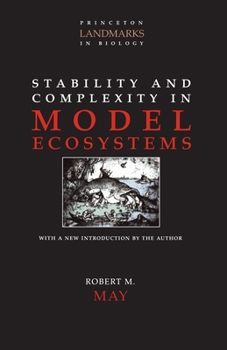Stability and Complexity in Model Ecosystems
(Book #6 in the Monographs in Population Biology Series)
Select Format
Select Condition 
Book Overview
What makes populations stabilize? What makes them fluctuate? Are populations in complex ecosystems more stable than populations in simple ecosystems? In 1973, Robert May addressed these questions in this classic book. May investigated the mathematical roots of population dynamics and argued-counter to most current biological thinking-that complex ecosystems in themselves do not lead to population stability. Stability and Complexity in Model Ecosystems played a key role in introducing nonlinear mathematical models and the study of deterministic chaos into ecology, a role chronicled in James Gleick's book Chaos . In the quarter century since its first publication, the book's message has grown in power. Nonlinear models are now at the center of ecological thinking, and current threats to biodiversity have made questions about the role of ecosystem complexity more crucial than ever. In a new introduction, the author addresses some of the changes that have swept biology and the biological world since the book's first publication.
Format:Paperback
Language:English
ISBN:0691088616
ISBN13:9780691088617
Release Date:April 2001
Publisher:Princeton University Press
Length:304 Pages
Weight:0.75 lbs.
Dimensions:0.8" x 5.5" x 8.5"
Customer Reviews
1 rating
a classic
Published by Thriftbooks.com User , 17 years ago
A facsimile reprinting of the 1974 Second Edition. It is great that Princeton University Press has made again available this classic work in mathematical biology. There is a wealth of mathematical ideas and methods, carefully written. Several Appendices provide additional mathematical background. All in all, this books continues to be a source of information and inspiration to this day.





